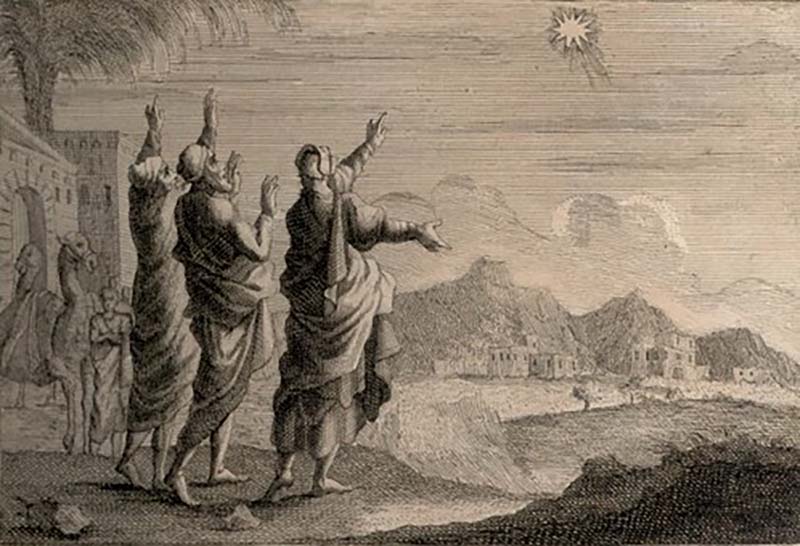Sometimes an old story can be refreshed with a new perspective, even one from far out in the galaxy.
That’s what Grant Mathews, director of the Center for Astrophysics at Notre Dame, figured when he decided to use his expertise to see if he could identify the star of Bethlehem that the Bible says announced the birth of Jesus.
“I’m an astrophysicist, so people see things in the sky, and I make models that explain them,” Mathews says. “It’s Christmastime, and here’s this astronomical event that’s been recorded, and I decided to just look at it as a scientific question.”
Mathews began his research with three basic questions:
When did it occur?
Scripture refers to the reign of Herod the King. Roman historian Flavius Josephus recorded Herod’s death as after a lunar eclipse, with his burial before the first day of spring. The Book of Luke says John the Baptist began preaching in the 15th year of Emperor Tiberius. Since John and Jesus were born six months apart and Jesus began teaching around age 30, these references point Mathews to a time frame of 8-4 B.C.
Did anyone else see it?
Chinese astronomers kept careful records of events in the sky going back beyond 1000 B.C. They record Halley’s comet in 12 B.C. and several astronomical phenomena in the right time frame, including comets, novae, supernovae and planetary alignments.
B - Comet with tail
C - Comet, no tail or motion. Possibly a nova or supernova.
What did it look like?
And behold, the star that they had seen at its rising preceded them,
indicates a morning star
until it came and stopped over the place where the child was.
indicates a second movement, a stop
–Matthew 2:9- Sun – a significant person would be born in Judea (Aries)
- Moon – a person with a special destiny to die at an appointed time
- Jupiter – a ruler, very powerful when with the sun
- Saturn – a giver of life
- Vernal Equinox – new life
- Other planets – strengthen importance
The importance of April 17, 6 B.C., is suggested by a coin minted in Antioch to commemorate the unification of Syria and Judea that depicts a bright star.
Mathews also believes his theory explains another mystery of the Christmas story. The story says the star preceded the magi during their journey and then stopped over the place of Jesus’ birth.
In astronomical terms, Mathews said planets usually appear to move from west to east relative to the background stars. But in a phenomenon known as “retrograde” motion, the outer planets appear to change to a westward motion when the Earth, with its shorter orbit, overtakes the outer planets. About six months later, Jupiter would appear to stand still as it reversed its motion to eastward again.
As an astrophysicist, Mathews said he feels a kindred connection to the magi astrologers of old.
“Today, we look at the sky … we’re looking for the truth revealed in the heavens,” he said. “And in that case, in that time, I believe God honored that sincere attempt by those viewers of the heavens of this pending event.”

For more information, listen to the Notre Dame Stories podcast episode, “What was the Christmas Star?”